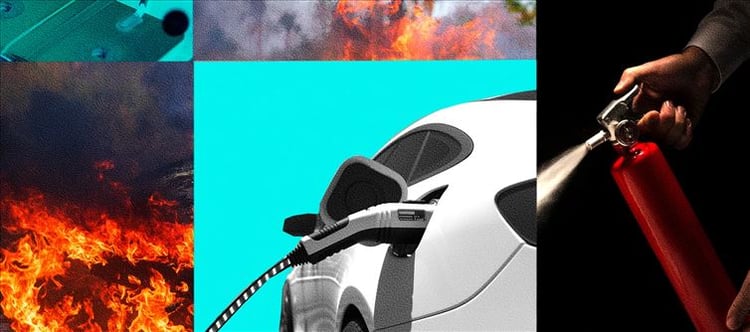
In a world racing toward electrification, the narrative around Electric vehicles (EVs) has been largely positive—environmentally friendly, sleek, and the ultimate symbol of progress. Yet, there's a darker side that engineers and firefighters alike are grappling with—EV fires. While traditional cars with internal combustion engines can catch fire too, EVs bring a unique set of challenges, and the industry is now confronted with the critical need to prevent, manage, and mitigate these fires before they tarnish the EV revolution.
Why Are EV Fires Different?
Unlike gasoline-powered vehicles, EVs run on lithium-ion batteries, which, while highly efficient, are also volatile. When they catch fire, the flames can be more dangerous, harder to control, and, alarmingly, more persistent. Reports of EV fires reigniting hours—or even days—after being extinguished have spurred concerns. These fires can last far longer than their gasoline counterparts, creating new risks for both passengers and emergency responders.
Even more concerning is the fact that many firefighters are ill-equipped to handle EV fires. The traditional methods and tools used for extinguishing regular car fires often don’t work on EVs. Dousing an electric vehicle with water can cool the flames, but it's not always enough to stop them from reigniting. Specialized training and equipment are urgently needed for this new fire risk.
The Tech Race to Tame the Blaze
The auto industry, aware that these problems could slow the march toward widespread EV adoption, is now taking action. Several innovative solutions are being developed, ranging from smart battery management systems to advanced fire-suppressant technologies.
Automakers are working on creating smarter batteries that can automatically disconnect from the car’s electrical system in the event of a crash, reducing the likelihood of a fire. Others are exploring fire-resistant battery enclosures that could contain the blaze before it spreads.
However, the most promising advancements lie in real-time monitoring of battery health. With AI-driven systems that constantly assess a battery’s condition, potential hazards could be flagged long before they lead to a fire. Early warnings could trigger preventative measures, such as cutting off power to certain cells or even safely discharging energy to reduce risk.
New Firefighting Tech for a New Era
The development of fire suppression systems specifically designed for EVs is also gaining traction. These systems can cool and isolate overheated cells more effectively than water, using chemical foams or gases that smother flames without causing additional damage to the vehicle.
Emergency response teams are also getting a technological upgrade. Special EV fire blankets, which can contain the flames, have already seen limited use in Europe, and now U.S. firefighters are beginning to adopt them. These blankets can limit the oxygen available to the fire, which can prevent it from spreading and reigniting.
Moreover, robotic firefighting systems are being developed to handle the high temperatures and toxic fumes that result from EV fires. These machines can spray suppressants more precisely and safely than human crews, allowing first responders to minimize risk.
A Future of Safer EVs?
While it’s clear that electric vehicles represent the future of transportation, this future is not without its complexities. As the technology matures, so too must the methods for preventing and combating EV fires. industry players are now embracing the challenge, innovating at breakneck speed to address these critical safety concerns. With automakers, emergency responders, and tech developers working together, the hope is that the dreaded EV fire could soon become a rare event—an outlier in a new age of clean, safe, and sustainable transportation.
As the world looks to a future of emission-free roads, the race to control EV fires isn’t just about safety—it’s about ensuring that the vision of electrified mobility isn’t consumed by flames. The stakes are high, but the technology being developed today may ensure that the EVs of tomorrow are safer, smarter, and truly transformative.




 click and follow Indiaherald WhatsApp channel
click and follow Indiaherald WhatsApp channel